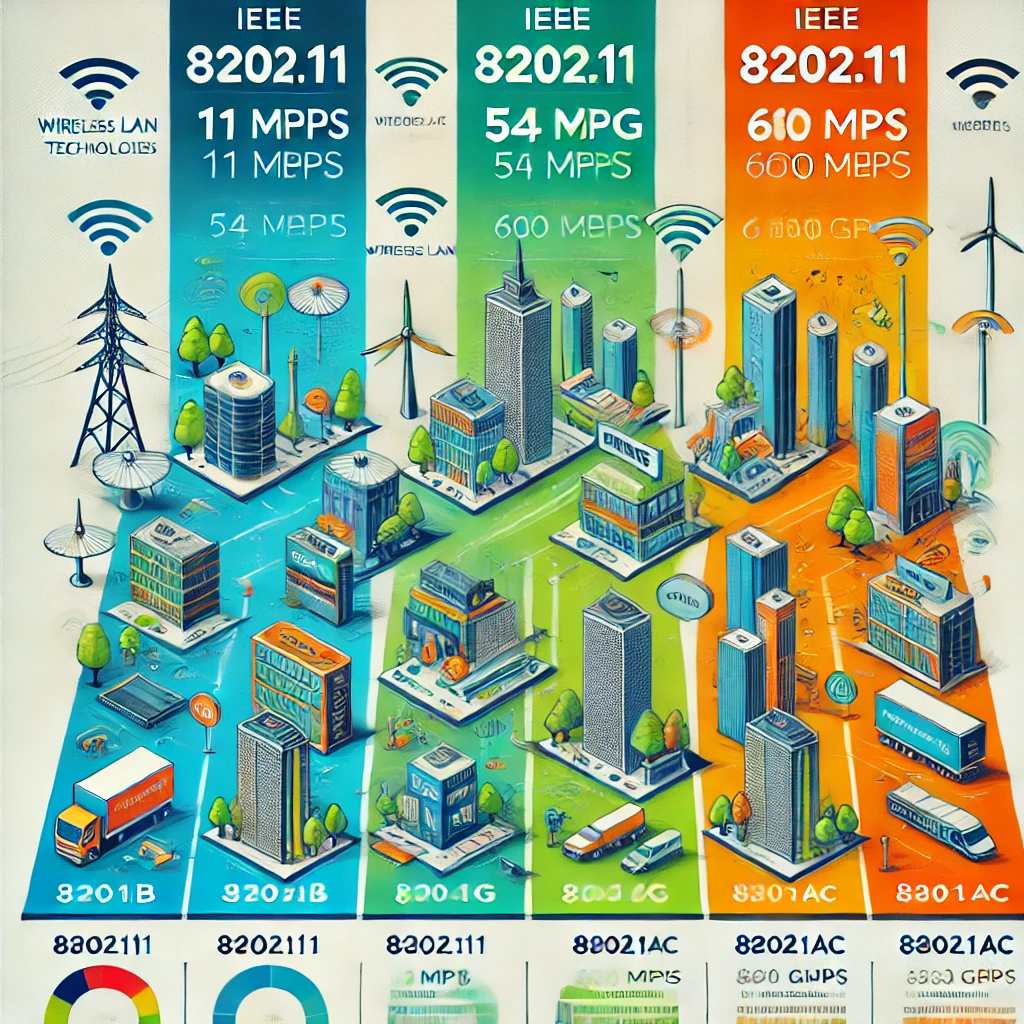WiFi in Theory
What is Wi-Fi?
Wi-Fi is a set of wireless communication standards that enable devices to establish connections within a localized network for IP-based data exchange. It eliminates the need for physical connections, allowing seamless communication between devices over the air.
The foundation of Wi-Fi lies in the IEEE 802.11 standards, which define its Physical (PHY) and Medium Access Control (MAC) layers. These layers handle critical wireless functions such as signal management, data transfer, channel allocation, and error correction. By adhering to these universal standards, devices from different manufacturers can communicate effectively and reliably.
The IEEE (Institute of Electrical and Electronics Engineers) oversees the development of Wi-Fi standards, while the Wi-Fi Alliance ensures the interoperability of certified devices, promotes the technology globally, and drives its adoption across industries.
Frequency Bands and Channels
Wi-Fi operates across multiple frequency bands, each suited for specific performance and environmental needs:
- 2.4 GHz Band: Offers extensive range and better penetration through obstacles, making it ideal for larger areas or environments with physical barriers. However, its popularity among various technologies leads to potential congestion and interference. It includes 14 channels, but only three (1, 6, and 11) are non-overlapping.
- 5 GHz Band: Provides faster speeds and less congestion due to its broader availability of non-overlapping channels. However, it has reduced range and penetration due to the higher frequency, and devices operating on this band consume more power.
- 6 GHz Band (available in "Wi-Fi 6E" and Wi-Fi 7): Expands capacity significantly by introducing additional channels with minimal interference. It supports high-speed applications in crowded environments, offering a clean spectrum for advanced wireless communication.
Advancements in Wi-Fi 6 and Wi-Fi 7
Both Wi-Fi 6 and Wi-Fi 7 utilize the 2.4 GHz, 5 GHz, and 6 GHz frequency bands, but they differ in channel width and data throughput capabilities:
- Wi-Fi 6: Operates on the 2.4 GHz and 5 GHz bands, with the 6 GHz band available for devices labeled as "Wi-Fi 6E." The maximum channel bandwidth is 160 MHz, supporting efficient multiple access and power-saving technologies.
- Wi-Fi 7: Builds on the foundation of Wi-Fi 6, utilizing the same frequency bands but enabling significantly wider channels of up to 320 MHz. This increased bandwidth allows for much higher data transfer rates, making it ideal for applications requiring extreme performance, such as high-definition streaming and low-latency gaming.
Choosing the Right Band
The choice of frequency band and channel width depends on specific use cases:
- For long-range connectivity and environments with obstacles, the 2.4 GHz band is preferable.
- For high-speed data transfer and minimal interference, the 5 GHz band is a better option.
- For advanced applications requiring large bandwidth and low congestion, the 6 GHz band offers the best performance, especially in Wi-Fi 6E and Wi-Fi 7 systems.
Wi-Fi in your home
Wi-Fi operates using two key device types:
- Access Points (APs): These act as central nodes in a network, broadcasting wireless signals to allow devices to connect.
- Stations (STAs): These are client devices, such as laptops, smartphones, and tablets, that connect to APs for network access.
When one or more STAs connect to an AP, they form a network known as an Infrastructure Basic Service Set (BSS). Each BSS is identified by a Service Set Identifier (SSID), a customizable network name used to discover and join networks. To ensure precise connections, especially in environments with multiple APs using the same SSID, a unique Basic Service Set Identifier (BSSID) derived from the AP's MAC address is also used.
How Devices Connect to a Wi-Fi Network
Wi-Fi connections follow a three-step process:
- Discovery: The client device scans for available APs using either:
- Passive Scanning, where it listens for periodic beacons from APs.
- Active Scanning, where it actively sends probe requests to detect nearby APs.
- Authentication: After identifying a suitable AP, the device requests authentication. The AP responds, and the specifics depend on the network’s security configuration.
- Association: The client sends an association request with details about its capabilities (e.g., supported data rates, channels, security protocols). The AP responds with an acceptance or rejection. If accepted, additional security measures may be initiated to secure the connection.
802.11 Data Transmission
Once connected, data is exchanged between the AP and client device through 802.11 frames. These frames often carry IP packets but can support other protocols as needed.
Wi-Fi traffic types include:
- Unicast: Data is sent directly from one device to another.
- Multicast: Data is sent to multiple recipients simultaneously.
- Broadcast: Data is sent to all devices in the network, commonly for network management or announcements.

